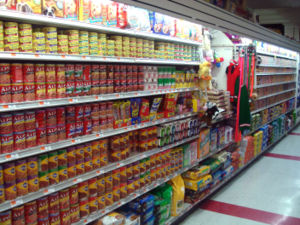When we shop for ourselves we know that organic food is better than conventional. Organic foods have more nutrients and less pesticide residues than conventional foods. Not to mention that the intensive animal farming practices used in agriculture today are responsible for increasing incidences of antibiotic resistance. So for ourselves we choose top quality organic produce and if we eat meat we choose fresh free range chicken, eggs and beef, but what about our pets?
The United States pet food industry is a 16.1 billion dollar a year business, and advertisers influence us with images of plump chickens, choice cuts of beef and healthy grains, but the reality is a little different. The fact is that the pet food industry is more or less a giant garbage disposal for the human agricultural business. All the stuff they figure we wont eat or anything that's not fit for human consumption ends up in that innocuous bag of kibble you bring home for Spot. It's a business after all. Why let anything go to waste when it could possibly turn a profit? Keep in mind that this is most often true for the bags and cans of food that you find in supermarkets, but it is possible to find better products at pet stores, health food stores, and vets offices.
Pet food labeling is subject to a standard outlined by the Association of American Feed Control Officials. Their label requirements are as follows. If your dog food as touted as 100% anything then in must be in fact 100%. The product can't contain any other ingredient except water. If the product is designated as 95% then in must contain chicken, beef, or fish up to 95% of the total weight of the product again excluding water. There aren't a lot of products like these on the shelves, as an all meat diet is not considered good nutrition these days. More frequently you will see the "dinner", "formula", or "platter" designations. In these cases only a small percentage of the food needs to be made from meat. In the case of the "dinner" foods only 25%, and for the others as little as 10% is considered acceptable.
Finally, the "flavor" designation is permitted when the pet food contains enough of an animal product to give the food the characteristic of that ingredient. In other words, a small bit of animal tissue is necessart, and in some cases artificial flavors are used instead. This is also acceptable. Next your pet's food is gussied up with any number of additives, artificial colors, and flavors. Not necessarily to make it taste better for the animal, but to make it more attractive to their human owners.
Some pet food companies sell more expensive products in hopes that we will believe their food is superior, to the cheaper varieties. The fact is that sometimes these premium brands are actually processed in the same factory, on the same machines, with the same ingredients as other less expensive varieties. It's a good idea to thoroughly research you pet's food. In future posts I will discuss better pet food options. There are plenty of healthy organic varieties to choose from, and if you pet suffers from any particular allergy or ailment it's possible to find a food that will acomodate those special needs.
Sunday, January 3, 2010
What Is Your Pet Really Eating?
Labels:
Dog food,
Food coloring,
Free range,
Health,
Organic food,
Pet food,
United States
Subscribe to:
Post Comments (Atom)

![Reblog this post [with Zemanta]](http://img.zemanta.com/reblog_c.png?x-id=0670534c-8ddd-49ee-ace1-9b6d223e14aa)
No comments:
Post a Comment